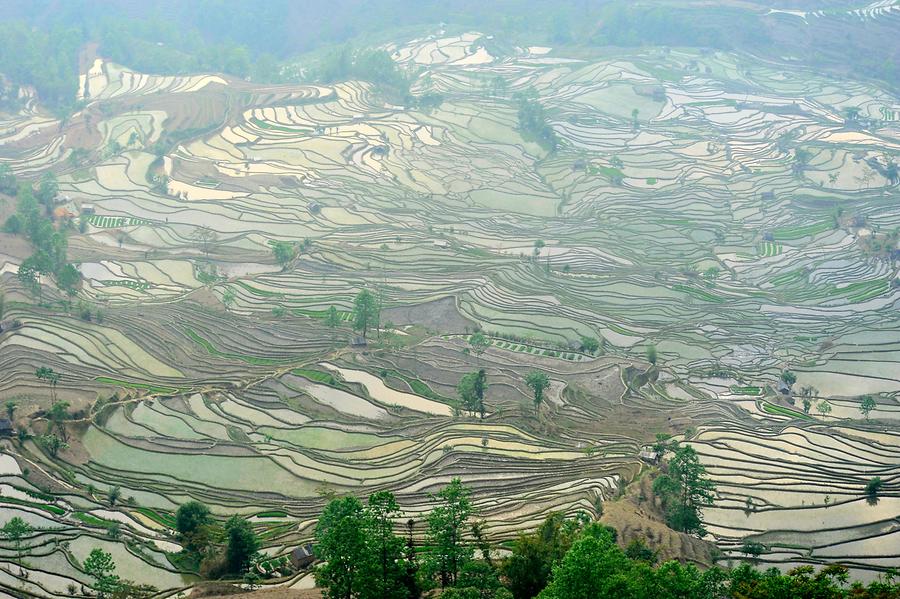The Rice Terraces of Laohuzui#

The Rice Terraces of Laohuzui, March 2012, © Gerhard Huber, under CC BY-NC 4.0 +Edu
In the area of Laohuzui thousands of rice terraces blur into a surrealistic painting. This painting also stands a little bit for a tour of the south-west of China. Uniformity and order effect the Confucian oriented life of the Chinese, and yet there is still a surprising variety, first of all due to the numerous minorities. Nevertheless, there is cause for concern. The unprecedented pragmatism of the Chinese manifests in everyday life, business and religion as well as in social life. Always take what is best of use at the moment. Whoever is not of immediate use in the Chinese sense has a rough ride. No good news for minorities. In this case it may well be unheard that even the great master, Confucius, appreciated diversity when he said that one should not call a man wise before he had not proved to be able to consider a matter from at least eight sides.
Im Gebiet von Laohuzui verschwimmen tausende Reisterrassen zu einem surrealistisch anmutenden Gemälde. Ein wenig steht dieses Gemälde auch als Synonym für eine Reise durch den Südwesten Chinas. Gleichförmigkeit und Ordnung bestimmen das konfuzianisch geprägte Leben der Chinesen, und doch stößt man immer noch auf eine erstaunliche Vielfalt, vor allem dank der zahlreichen Minderheiten. Trotzdem besteht Anlass zur Sorge. Der beispiellose Pragmatismus der Chinesen offenbart sich in Alltag, Wirtschaft und Religion genauso wie im Gesellschaftsleben. Man nehme stets das, was gerade am besten nützt. Wer keinen unmittelbaren Nutzen in chinesischem Sinne bringt, hat es schwer. Für Minderheiten keine guten Nachrichten. Es wird wohl in diesem Fall ungehört bleiben, dass sogar der große Lehrmeister Konfuzius Vielfalt zu schätzen wusste: „Nenne keinen weise, ehe er nicht bewiesen hat, dass er eine Sache von wenigstens acht Seiten her beurteilen kann.“.